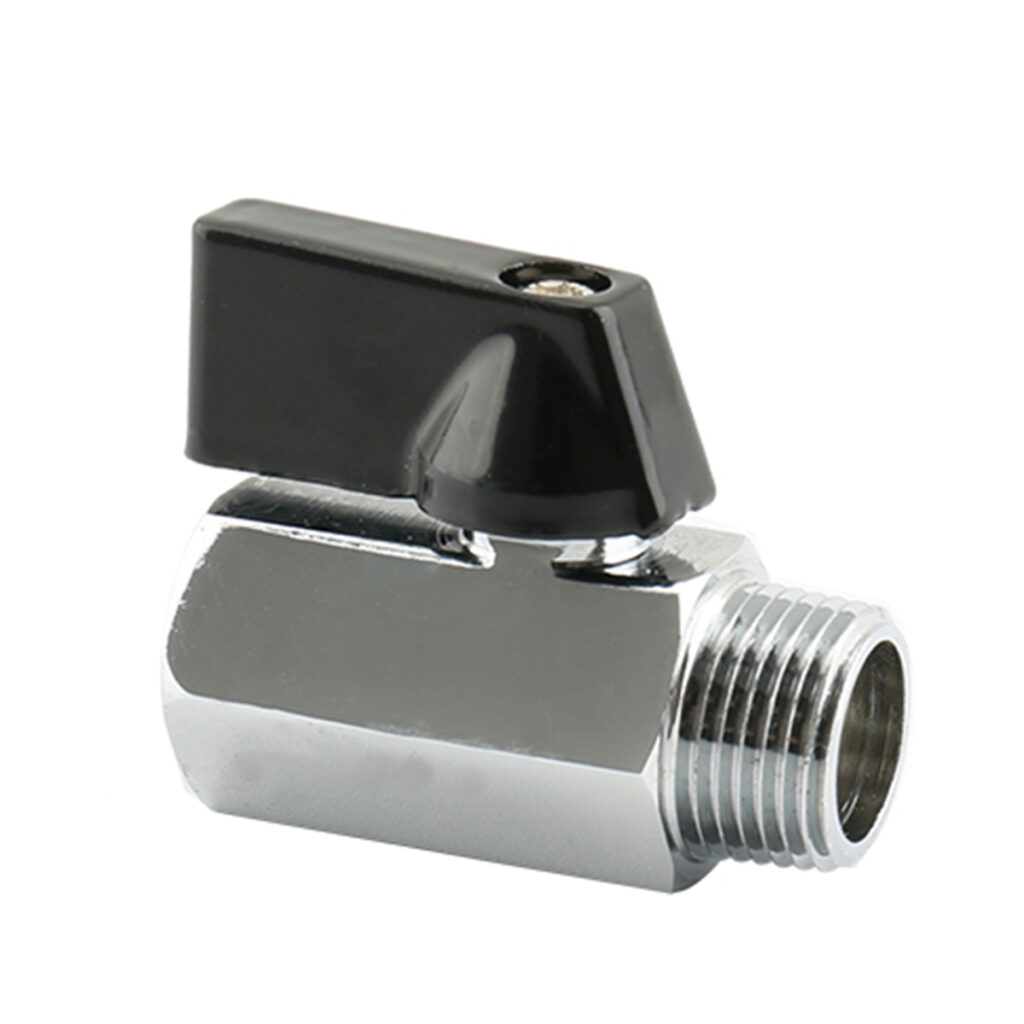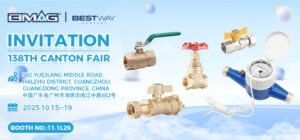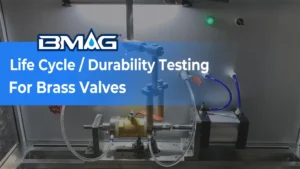අන්තර්ගත වගුව
ටොගල් කරන්නWhat is One-Piece Ball Valve?
එක්-කෑල්ලක් බෝල කපාටය සරලයි, තනි ලෝහ හෝ ප්ලාස්ටික් කැබැල්ලකින් සාදන ලද සංයුක්ත කපාටය. ඇතුළත, there’s a ball with a hole through it that turns to control fluid flow. These valves are popular in residential applications, such as household plumbing systems and they’re cost-effective.

Technical Specifications
Size Range and Pressure Ratings:
Temperature Ratings:
- PVC: 32°F to 140°F
- පිත්තල: -4°F to 366°F
- මල නොකන වානේ: -20°F to 450°F
- කාබන් වානේ: 0°F සිට 400°F දක්වා

Materials and Their Applications:
- පිත්තල
- සඳහා හොඳම: ජලය, වාතය, mild chemicals
- පිරිවැය: $$
- කල්පැවැත්ම: හොඳයි
- විඛාදන ප්රතිරෝධය: Moderate
- මල නොකන වානේ
- සඳහා හොඳම: Food, pharmaceuticals, corrosive fluids
- පිරිවැය: $$$
- කල්පැවැත්ම: විශිෂ්ටයි
- විඛාදන ප්රතිරෝධය: විශිෂ්ටයි
- PVC
- සඳහා හොඳම: ජලය, chemicals, low-pressure systems
- පිරිවැය: $
- කල්පැවැත්ම: Fair
- විඛාදන ප්රතිරෝධය: විශිෂ්ටයි
යෙදුම් & Industries
Water Systems:
- Residential plumbing
- Municipal water treatment
- Water filtration
Industrial Uses:
- සම්පීඩිත වායු රේඛා
- Basic chemical processing
- සිසිලන පද්ධති
- Basic process control
Comparison with Two-Piece Ball Valves
One-Piece vs. Two-Piece Ball Valves:
Structure Differences
One-piece ball valves have a single solid body that contains all components. The body is cast or forged as one unit, with the ball, stem, and seats assembled through the end. Two-piece ball valves, on the other hand, split into two parts.
Cost Comparison
One-piece valves are generally 30-40% cheaper than two-piece versions. This price difference comes from simpler manufacturing processes and fewer parts. කෙසේ වුවද, when considering long-term costs, two-piece valves might save money since they can be repaired rather than replaced.
Installation and Handling
One-piece valves are lighter and more compact, making them easier to install in tight spaces. Since there are fewer joints, they’re also less likely to leak. Two-piece valves are slightly bulkier.

Selection Guide
How to Choose the Right 1-Piece Ball Valve:
- Determine Your Requirements:
- Pipe size
- මෙහෙයුම් පීඩනය
- උෂ්ණත්ව පරාසය
- දියර වර්ගය
- Flow requirements
- අවකාශ සීමාවන්
- Consider These Factors:
- Material compatibility
- Pressure rating
- Temperature limits
- Cost constraints
- Installation method
- Local regulations
Installation & නඩත්තු කිරීම
ස්ථාපන පියවර:
- Clean pipe ends
- Apply thread sealant (if threaded)
- Align valve with flow direction arrow
- Tighten connections properly
- කාන්දුවීම් සඳහා පරීක්ෂා කරන්න
Best Practices:
- Don’t over-tighten
- Use appropriate tools
- Follow torque specifications
- Maintain clearance for the handle
- Support pipe properly
Factors Affecting Cost:
- Material quality
- Brand reputation
- Certification requirements
- Order quantity
- Market conditions
Market Trends
Current Developments:
- Smart valve integration
- Eco-friendly materials
- Enhanced durability
- Better sealing technology
- Automated monitoring
අනාගත ඉදිරි දැක්ම:
- Growing demand in residential sector
- Increased focus on water conservation
- Rise in smart home applications
- Stricter quality standards
- New material technologies
නිති අසන පැණ
Q: How long do one-piece ball valves last?
ඒ: සාමාන්යයෙන් 5-10 years with normal use.
Q: Can they be repaired?
ඒ: නැත, they’re designed to be replaced when worn.
Q: What’s the main advantage over other valve types?
ඒ: Simplicity, විශ්වසනීයත්වය, සහ පිරිවැය ඵලදායීතාවය.
Q: How often should they be operated?
ඒ: At least once every 3-6 months to prevent sticking.
Q: Can they be used for steam?
ඒ: Not recommended – use multi-piece valves instead.





